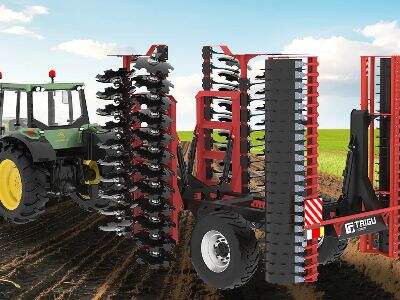Soil moisture is like water for plants; it creates large and strong vegetation. Just as you need to drink water to be healthy, plants require moisture in the soil to thrive. So it is important to have an ideal moisture in soil for using rotavator. If the soil is too dry, the rotavator won't work effectively as the soil will be too hard. The rotavator can also get stuck if the soil is too wet and more difficult to break up.
A simple trick will assist you to make sure that the soil has a perfect amount of moisture. Get some soil in your hand and squeeze it. If it stays together and forms a ball, the soil has adequate moisture. If it falls apart easily, the soil is too dry. And if water comes out when you squeeze it, the soil is too wet. Get it right and your rotavator will be working like a dream and your soil nice and fluffy.
Which Soil pH is Best for Your Rotavator?
pH measures how acidic or basic your soil is. The range of pH is from 0 to 14, with 7 being neutral. Most plants prefer growing in slightly acidic to neutral soil with a pH of 6 to 7. How the soil affects the rotavator: If your soil is either too acidic or basic, it will determine how effective your rotavator is.
It is advisable to perform soil testing to check the pH level, when using a rotavator. You could do this with a simple soil test kit from a gardening supply store. If the soil is overly acidic, you can add lime to neutralize it. So if it is too simple, you can reduce the pH with sulfur. Ensuring Proper Soil pH — Having the correct soil pH can assist your rotavator in functioning effectively and provide a suitable environment for crops to thrive in.
Soil texture,Traction tillage machine is how it feels in the hand of your soil. These soils have larger pieces so they feel gritty. Other soils are clayey, meaning their pieces are smaller, and they feel sticky. Some soils are loamy — a combination of sand, silt and clay that is just right, like the story of Goldilocks!
Things to Consider When Selecting the Right Soil Texture for Your Rotavator It’s loose and light, so sandy soil is easy to work with. A rotavator might find it tough to break up clayey soil as it is dense and compact. Loamy soil works best with a rotavator due to its ideal proportions of sand, silt, and clay. If you have sand or clay, use organically sensed soil amendments such as compost, to make it more loamy, just the structure for your rotavator.
Use Your Rotavator To Repair Compacted Soil
Soil compaction is like tamping down snow into a snowball — it’s hard and difficult to break. Soil that has been compacted becomes difficult for plants to grow on, as their roots cannot easily move. Rotavator can break up the compacted soil and prepare a nice bed for plants.
Walking or driving over the soil too much is one of the most common reasons for soil compaction. The solution: use raised beds/pavement and avoid hard soil. Soil compaction can also be avoided by regular rotavation, where the soil is aerated and churned, reducing compaction. Your rotavator can help break up compacted soil and form a healthy planting envelope for plants to grow strong.
Preparing Soil for the Rotavator: Top Tips
There are things that you can do to prepare your soil and make sure that it is ready before you use your rotavator. First up, you need to clear the soil surface of stones, Combined tillage machine weeds or rubbish that could damage the rotavator blades. Then pixel mark the area you're going to work on and divide it into sections.
In addition to that, you can start using your rotavator on this land to break up the soil and ensure you have a nice and fluffy land. Be sure to go over the soil in many passing directions to ensure that it is well-mixed and aerated. You may apply compost or other organic matter, after rotavator use, to fertilize the soil and nutrients-rich plants.
If you take these tips on board, and consider soil moisture levels baby, pH, texture and compaction, you can make your rotavator work mucho better and create the ideal environment in which plants to flourish. Soil health is the foundation for a thriving garden! Happy gardening!

